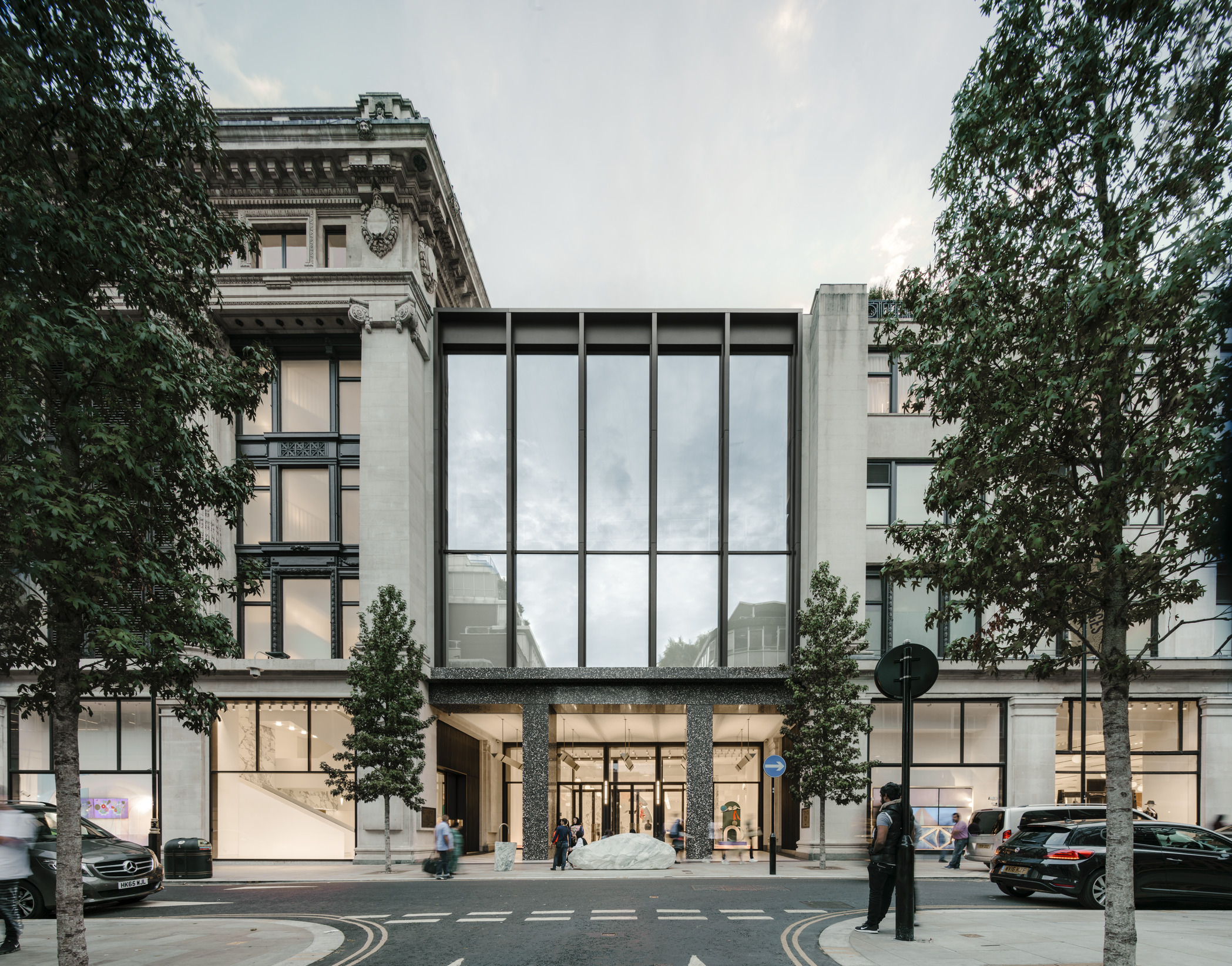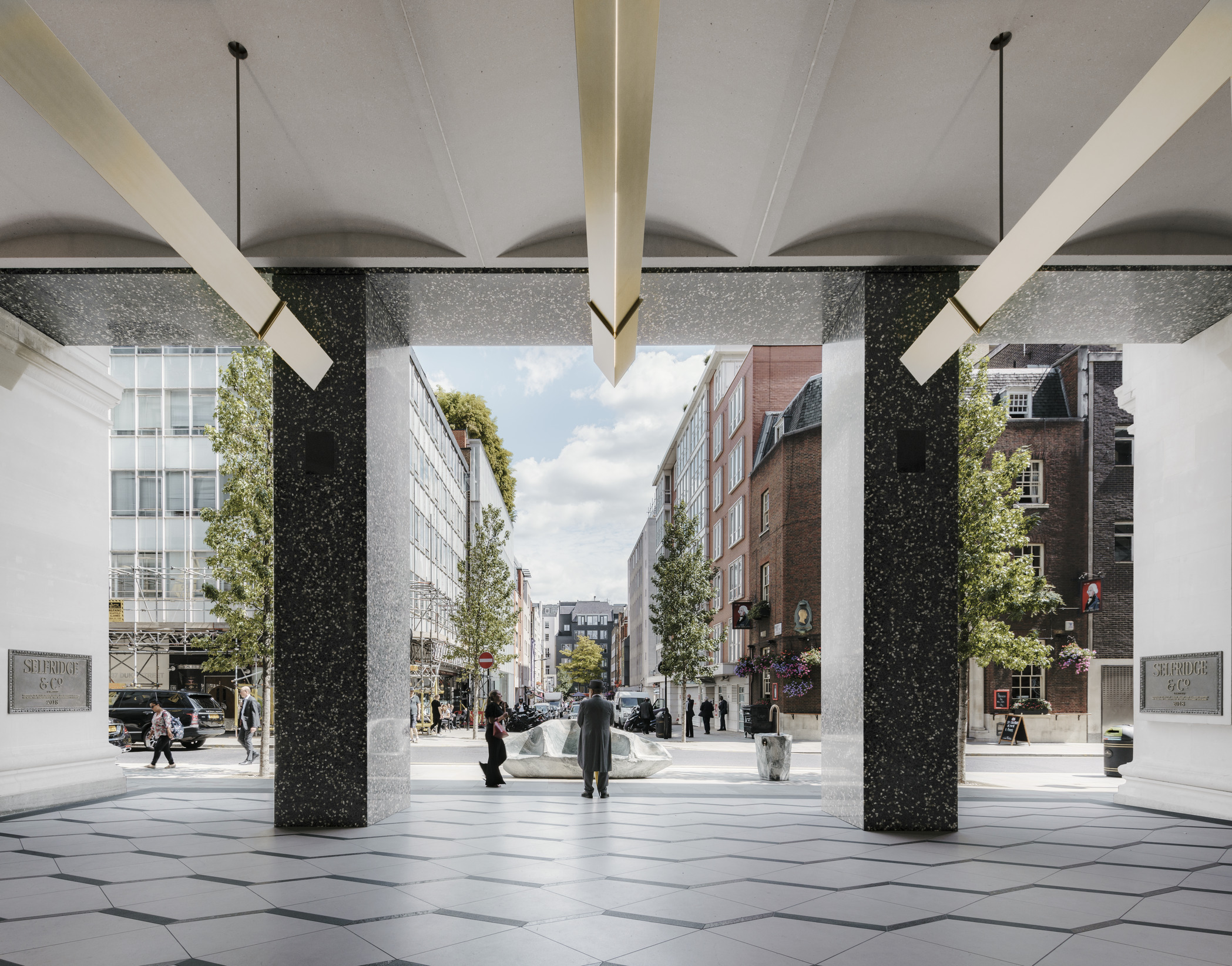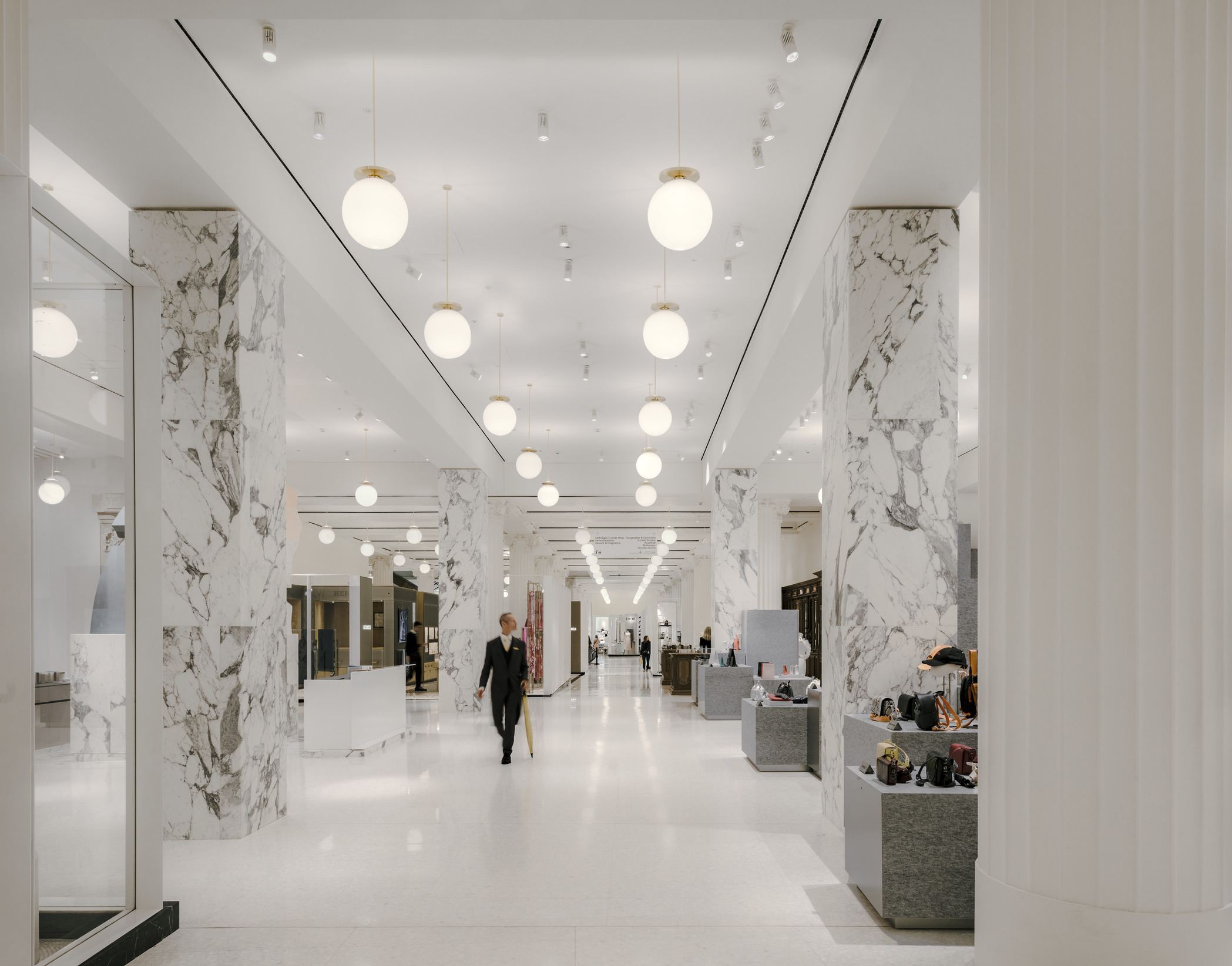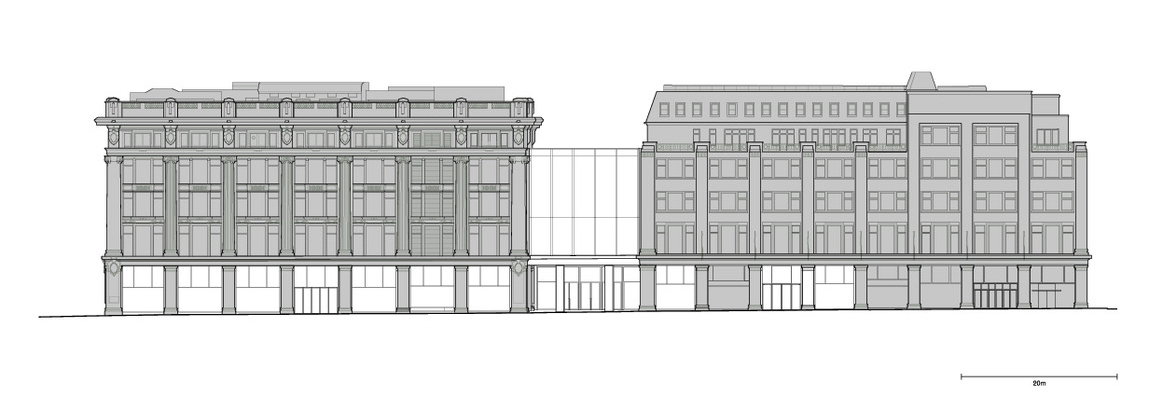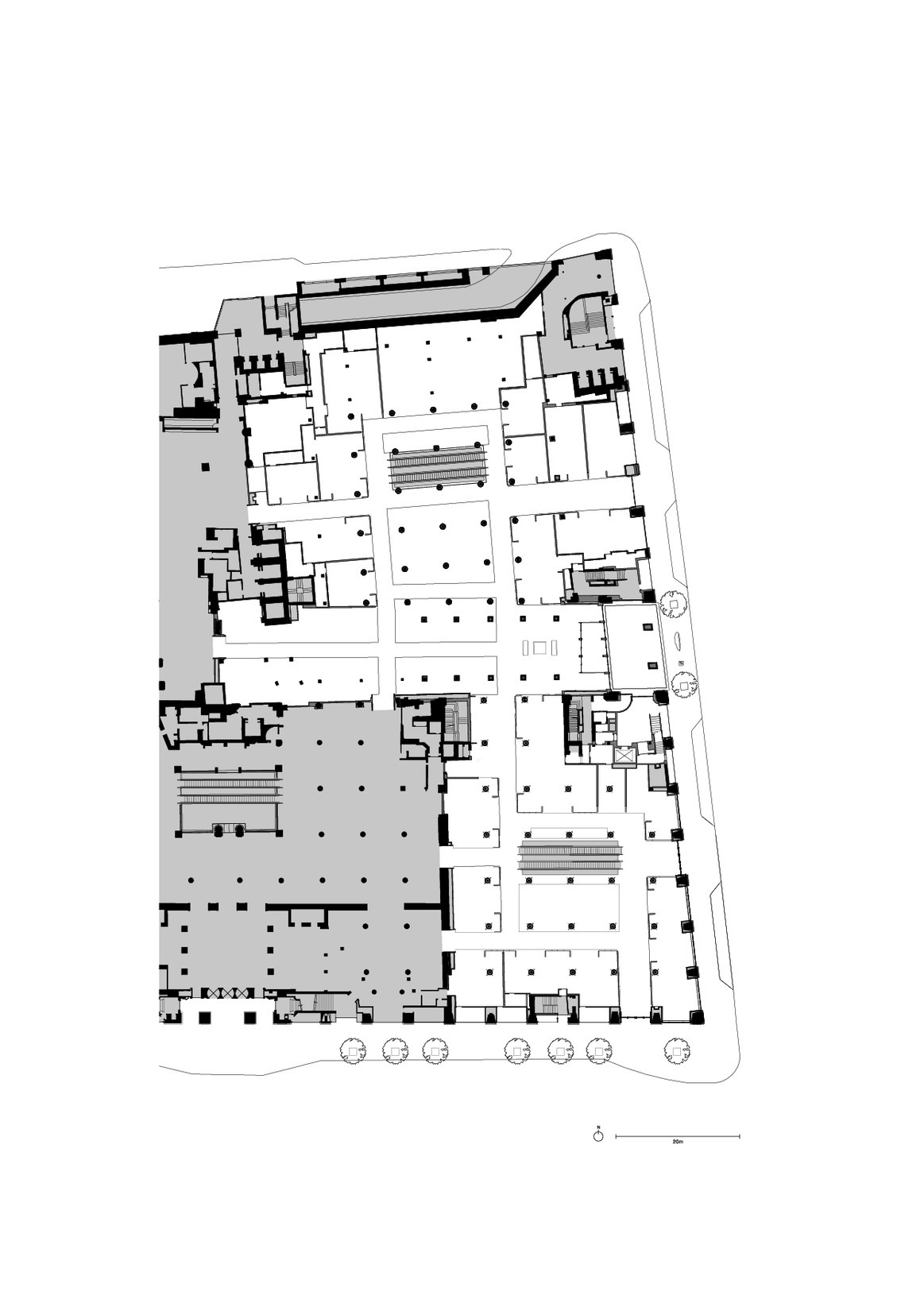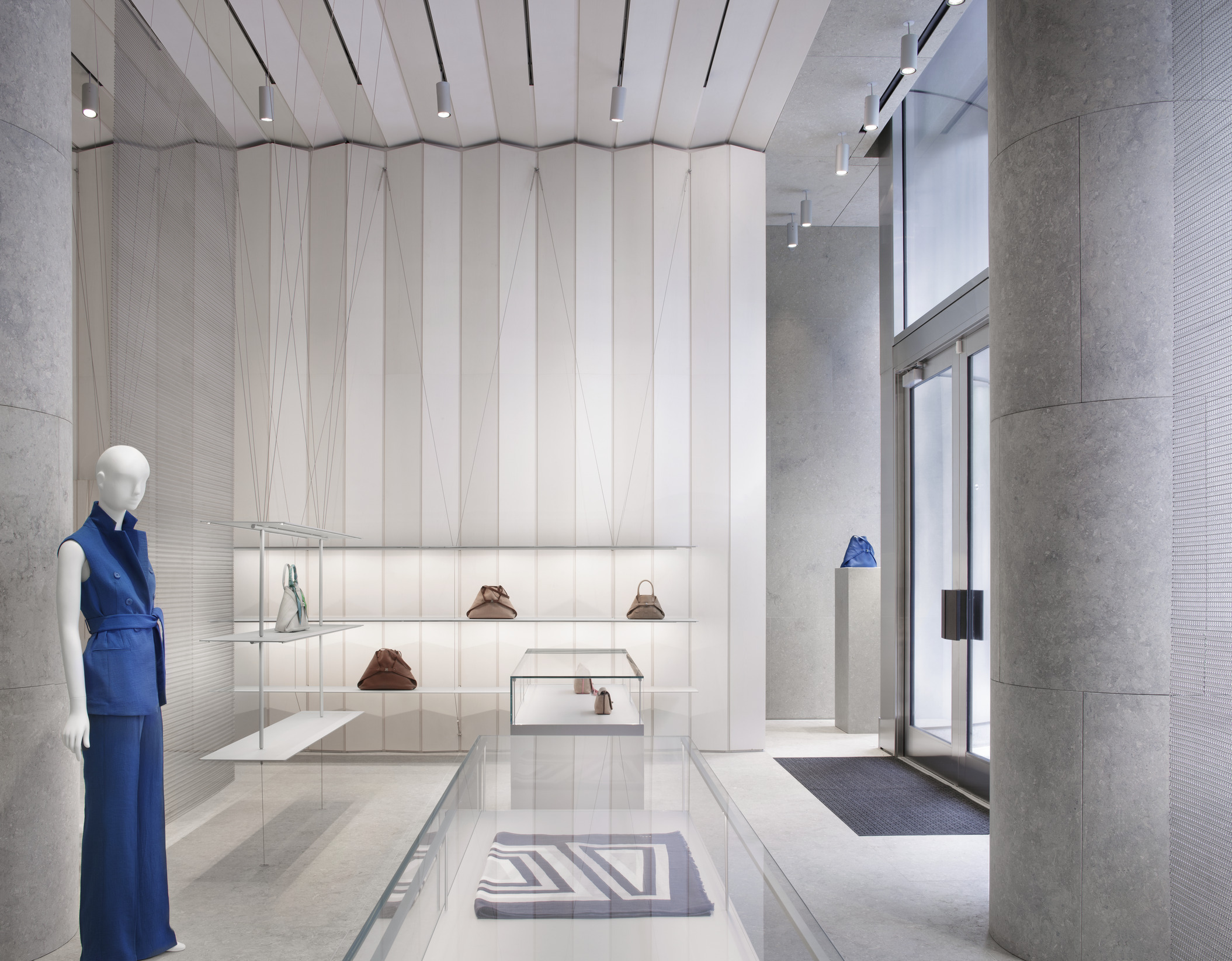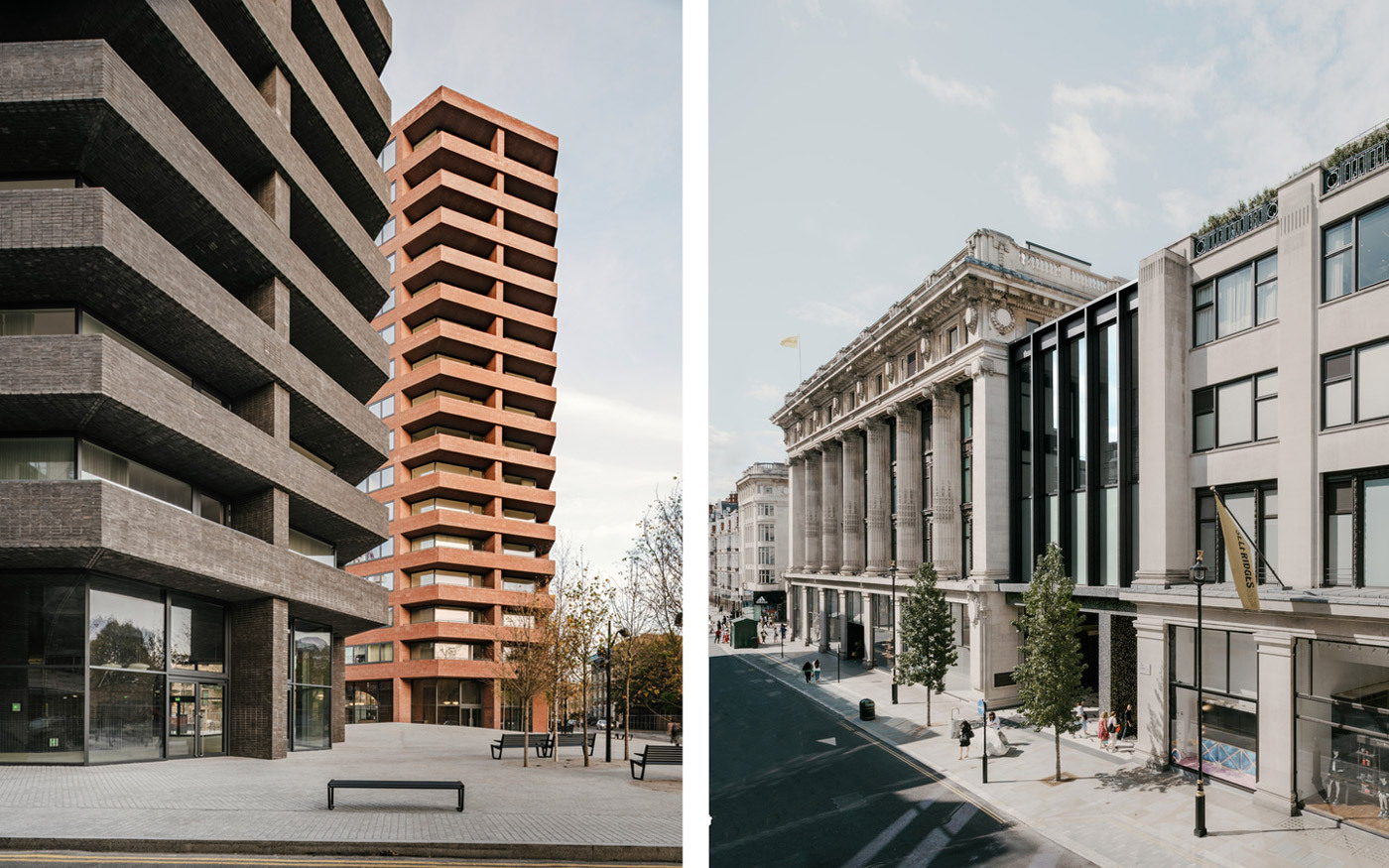Selfridges Duke Street
London, UK
2014–18
Selfridges’ original building opened on Oxford Street in 1909 and was expanded to the rear in several stages. Its grand, Beaux-Arts façade disguises a store that was both labyrinthine and lacking architectural coherence. The project covers the entire ground floor of the flagship store’s east wing along Duke Street. Spanning three interconnected buildings, it encompasses a new entrance building and accessories hall, which together create a more coherent identity for the store, improving its urban presence, clarity in circulation and reintroducing the glamour and grandeur of the original building. The project was completed in several phases, allowing the store to remain open throughout.
The new entrance building replaces a 1960s infill, linking the two neighbouring façades with a grand entrance that reinforces the civic presence of the store in the manner of the Oxford Street façade. Rather than a hybrid of neighbouring architectural styles, the new entrance building maintains both structural and visual independence; its dark palette deliberately contrasting the cream-coloured Portland stone of the adjacent buildings. The upper façade is formed of slender bronze-clad structural columns framing expansive glazing which reveal enclosed sections of the historic façade. These columns rest on a deep black precast concrete trabeated frame with two monumental piers framing the porch.
As well as providing a new entrance, internally the new volume improves the store’s circulation and navigability. By stitching together the retail spaces of the two existing buildings, a continuous ground floor space for the new accessories hall is created. This new hall is defined by a hierarchy of architectural elements that operate across the site, reasserting the presence of the building as a singular department store rather than a shopping mall.
The primary elements of the space – floors, ceiling and supporting columns – retain their independence from retail display. In the original Oxford Street building historic plaster columns with classical mouldings are re-instated to their maximum height and the coffers are made visible in their original configuration. In the northern building, a new style of column and coffer are introduced; an interpretation and abstraction of the classical features of the original. The flooring is white-on-white terrazzo.
The secondary elements include free-standing glazed screens and partition walls, which frame individual brand-run concessions within the larger space and delineate clear walkways. A rigorous set of guidelines for each brand’s fit-out ensures they remain in harmony with the overall concept. The spherical glass light fittings are a dominant feature throughout the store and relate to the original 1920s lighting. These act as a unifying feature throughout the accessories hall. Bespoke counters are designed in contrasting materials such as walnut, felt and blue-tinted glass and are grouped across the hall displaying merchandise.
Data and credits
- Project start
- 2014
- Construction start
- 2015
- Completion
- 2018
- Gross floor area
- 5,000m²
- Client
- Selfridges Retail Ltd.
- Architect
- David Chipperfield Architects London
- Directors
- David Chipperfield, Louise Dier
- Project Directors
- Benito Blanco, Rik Nys
- Project architects
- Richard Marks, Sergio Pereira
- Project team
- Antonio Acocella, Lewis Armstrong, Ricardo Alvarez, Matt Ball, Pau Bajet, Nick Beissengroll, Nicolas Burckhardt, Alessandro Cairo, Manon Cornu, Sebastian Drewes, Elena Dueñas, Christian Esteves, Ga-briel Fernandez, Micha Gamper, Ines Gavelli, Clemens Gerritzen, Luke Gleeson, Miguel Huelga, Claire Lee, Joseph Marchbank, Ana Martins, David Monteiro, Chiara Montgomerie, David Musrie, Chrystal Ohoh, Monica Resines, Jacek Rewinski, Joana Ribeiro, Renato Pimenta, Jana Schwalb, Cecilia Sjöholm, Patrick Ueberbacher, Hugo Wakin, Richard Youel
- Landscape architect
- Djao-Rakitine Ltd.
- Restoration architect
- Julian Harrap Architects LLP
- Project management
- Stanhope Plc
- General contractor
- ISG, Portview Fit-Out
- Construction manager
- Duke Street Joint Venture (SRM and Blue Sky Building)
- Quantity surveyor
- Alinea Consulting
- Structural engineer
- Expedition Engineering
- MEP engineers
- Arup, Waterman Group
- Building physics
- Arup
- Fire protection
- Jeremy Gardner Associates
- Lighting
- Viabizzuno
- Lighting consultant
- Arup, Viabizzuno
- Facade consultant
- Thornton Tomasetti
- Photography
- Simon Menges, Edward Park
- Selected Awards
- RIBA Regional Awards 2019
